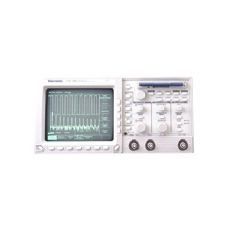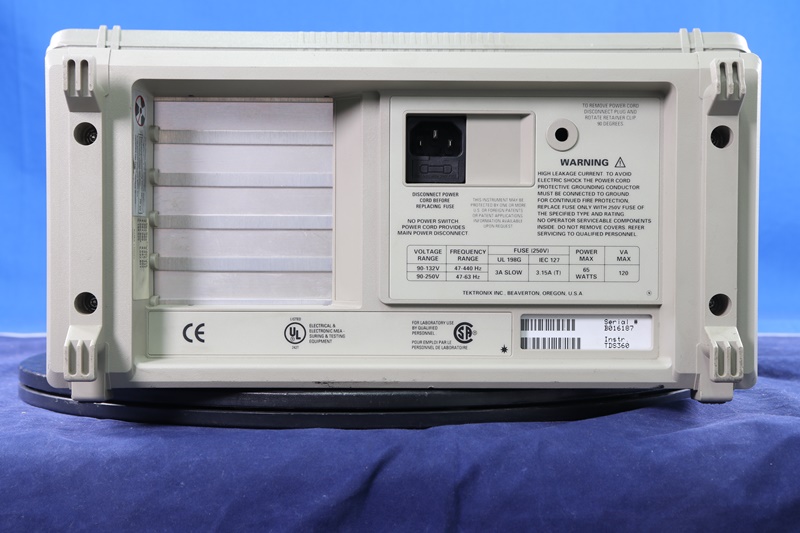
TDS360 Tektronix Digital Oscilloscope
Additional Features:
Bandwidth 200 MHz
2 Channels
Sample Rate: 200 Ms/s
Sensitivity: 2 mV to 10 V/div
8-Bit Vertical Resolution
Built-In 3 .5 in . Floppy Disk Drive
Position Range-±5 division
AutoSetup
Accumulate Display Modes
2% Vertical Accuracy
1 K Record Length
Roll Mode
21 Automatic Measurements
FFT Analysis
10 ns Peak Detect for High-speed Glitch Capture
Applications:
Service
Education
Design
Manufacturing Test
The TDS 300 Series redefines the low-cost digital oscilloscope. By sampling the signal at up to five times the analog bandwidth on both channels simultaneously, you can be assured of true acquisitions, minimizing aliasing or other digital sampling effects. Unlike other DSOs, the TDS 300 Series easily gathers enough samples to display waveforms accurately to their full bandwidth. They are the only scopes in their class that can reliably acquire high-speed transient or single-shot events to their fastest sweep speed.
Many low-cost DSOs offer only dot displays, which can be hard to interpret by those used to analog scopes. The TDS 300 Series has Dot, Dot Accumulate, Vector, and Vector Accumulate display modes-another advantage over the competition.
The Accumulate modes gather multiple waveforms for a user-defined time (500 ms to ∞), after which the screen is cleared. Vector Accumulate mode uses bright vectors to superimpose the current acquisition over the accumulated waveforms. Dot accumulate mode is recommended for viewing video and other complex waveforms. The display is erased at the time set or when the acquisition setting is changed. These modes are useful for doing worst-case analysis or signal monitoring. Long-term monitoring may be done easily by setting the erase time to infinity.
Envelope mode, by including the highest and lowest points over many acquisitions, shows variations in the signal over time. Average mode uses several acquisitions to calculate an average value for each waveform point, reducing random noise in repetitive signals.
REQUEST A QUOTE


